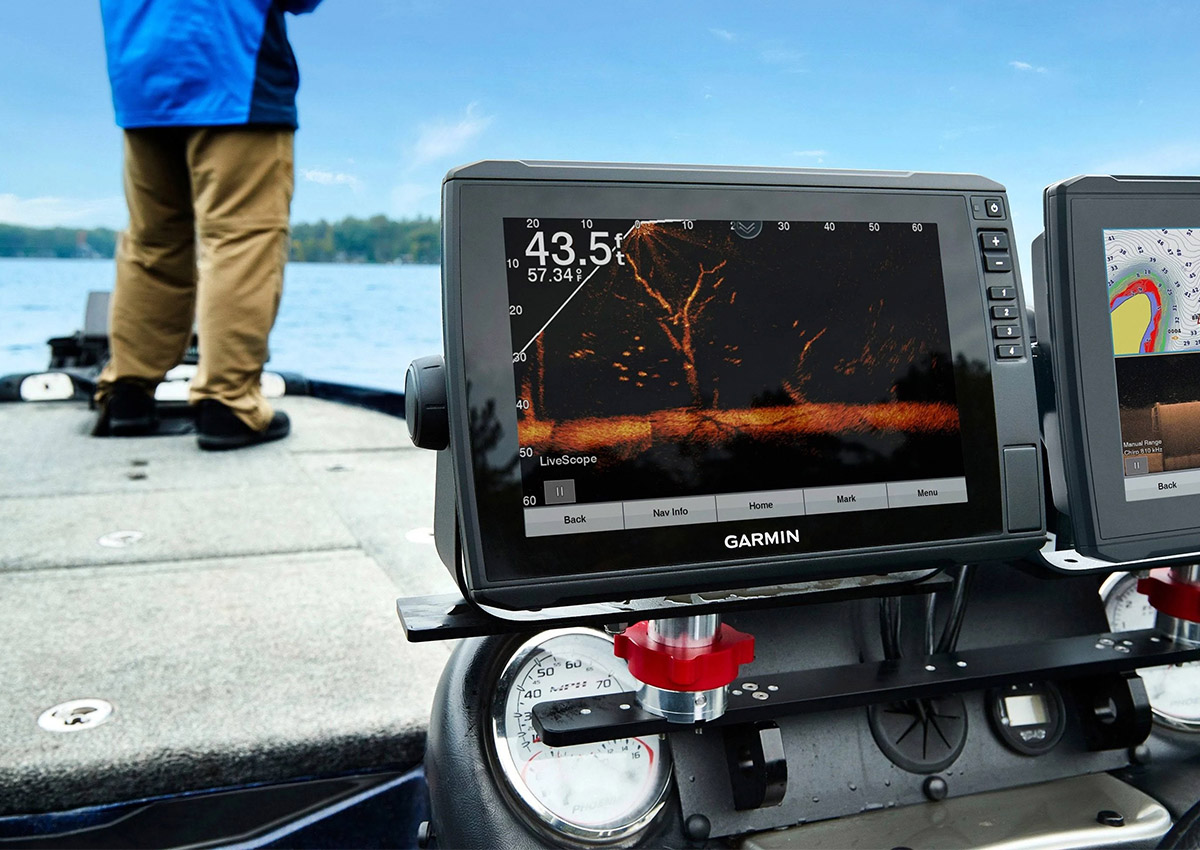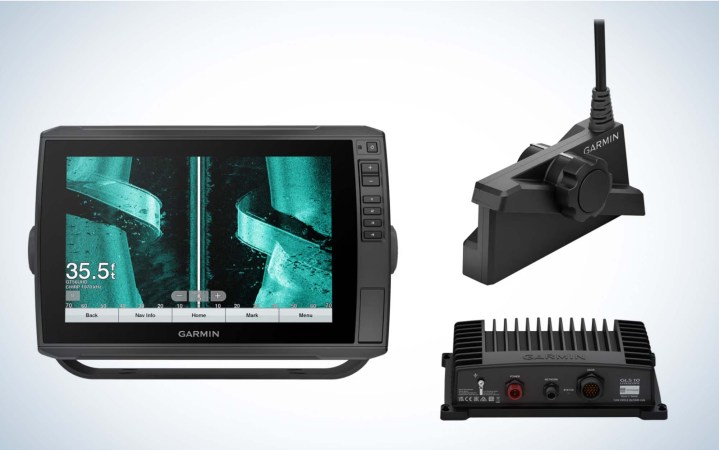We may earn revenue from the products available on this page and participate in affiliate programs. Learn More ›
Getting caught up in the marine electronics arms race is easy. Your fishing buddy upgrades his screens, his options, and his processing speed, and then suddenly you feel compelled to do the same. With some pro anglers running five or six different graphs, each with a distinct purpose and hefty price tag, it’s easy to feel like you need to blow out your budget in order to catch fish. But really, you just need one solid system to get you in the game. I decided to see if the Garmin ECHOMAP Ultra 126sv could be that unit for my boat.
When I bought my first bass boat in 1996, the console graph was a 4-inch diagonal, black-and-white, two-dimensional sonar unit, and it cost about two hundred bucks. On my last boat, I paid more than that just for the mount to secure one of my units. I’ve gone from that first unit to adding GPS, to switching to color, to adding side-imaging, and now forward facing sonar. Each iteration adds to the cost, battery demand, learning curve, and capabilities.
I ran other brands through my first six boats. But after being in the boat with various guides and professional anglers, I’d been impressed by the Garmin units’ crisp pictures, ease of use, and particularly the forward-facing aspect — formerly Panoptix, now referred to as LiveScope. I will never be a complete sonar guru because I typically look for bass in less than 5 feet of water on my home tidal rivers. But I knew that tackling this new technology would open up new worlds to me, so I took the plunge and put one 126sv on the console and the other on the bow. The former has side-imaging, and the latter has forward facing sonar.
After several months of running them, here are my thoughts on the Garmin ECHOMAP Ultra 126sv and LiveScope transducer.
Garmin ECHOMAP Ultra 126sv and LiveScope Specs and Features
- 12-inch touchscreen
- 1280 x 800 pixels
- Accepts Micro SD Cards
- Built-in receiver
- Two sets of preloaded maps/charts
- ActiveCaptain app allows updating and remote monitoring
- Traditional sonar and Ultra High-Definition ClearVu and SideVu scanning sonars.
- Wide variety of color palettes
- Network Capable
- Engine connectivity
- Compatible with LiveScope Plus transducer
Touchscreen
The 12-inch touchscreen features easy-to-use menus and remains readable even in bright sunlight thanks to a variety of color palettes that can be chosen to differentiate different targets and types of cover.
Mapping
The 126sv comes preloaded with Garmin’s Navionics plus coastal and inland waters mapping, with smartphone compatibility. You can add premium cartography with high-resolution relief shading and satellite imagery for a fee. You can also create shareable personalized maps with 1-foot contours.
Networking
Through networking technology, anglers with multiple compatible ECHOMAP units can use them to share information, including sonar, charts, and waypoints. There’s also built-in wifi connectivity to allow for software updates and notifications, as well as the sharing of data with other community members.
Testing the Garmin ECHOMAP Ultra 126sv in the Field
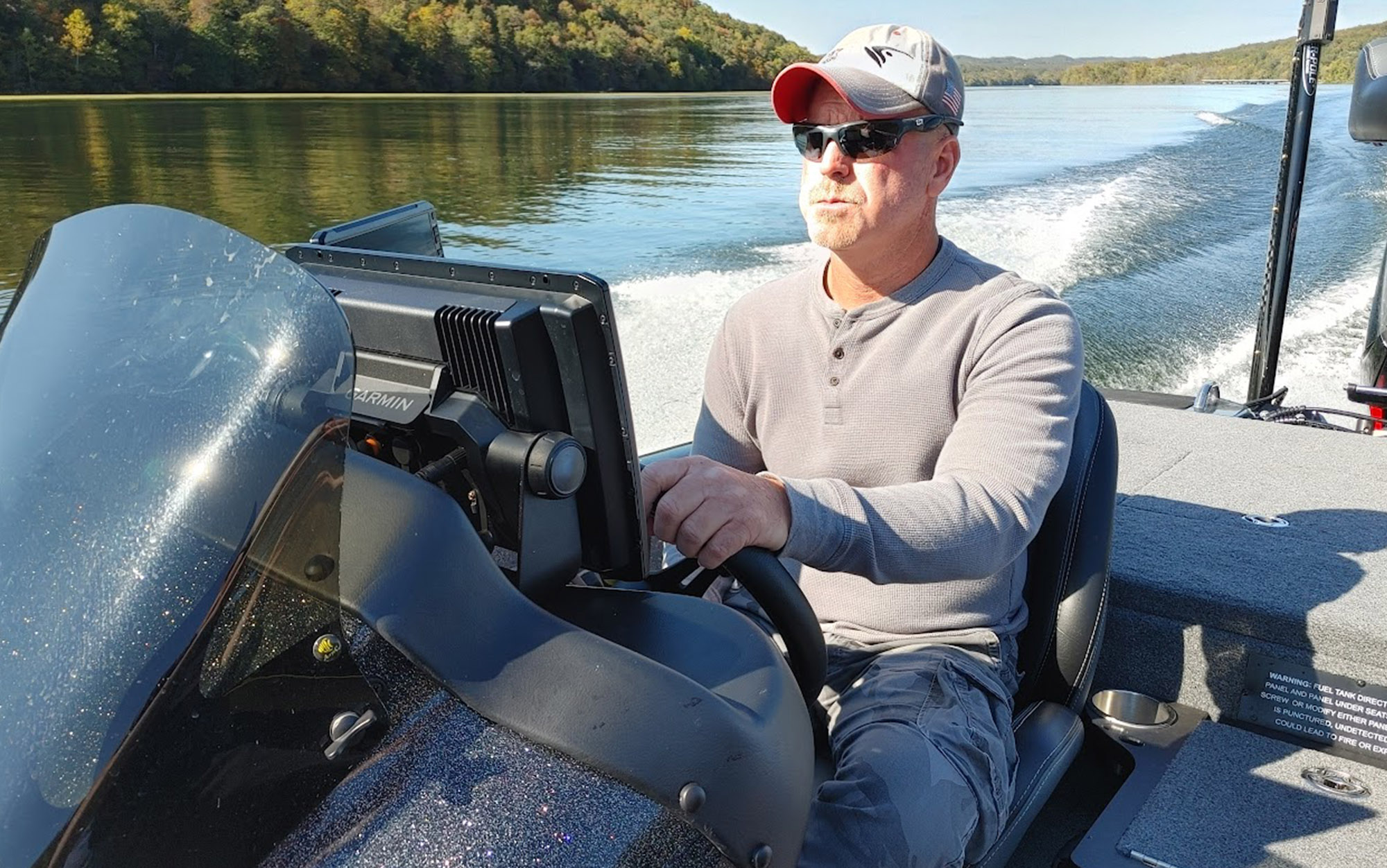
When it came time to order my boat, I was initially tempted to join in the electronics arms race. As long as I was putting forward facing sonar on the trolling motor, I figured I’d want a dedicated LiveScope screen and a separate 12-inch screen for mapping and two-dimensional sonar. I also considered putting two graphs on the console, one for side-imaging while I idled and the other for mapping and sonar.
Eventually, I realized that would be a huge additional cost (these units are close to $3,000 apiece, and the LiveScope ducer is extra). I was unlikely to get the most out of them because I spend the majority of the time looking at and casting to visible targets.
My Electronics
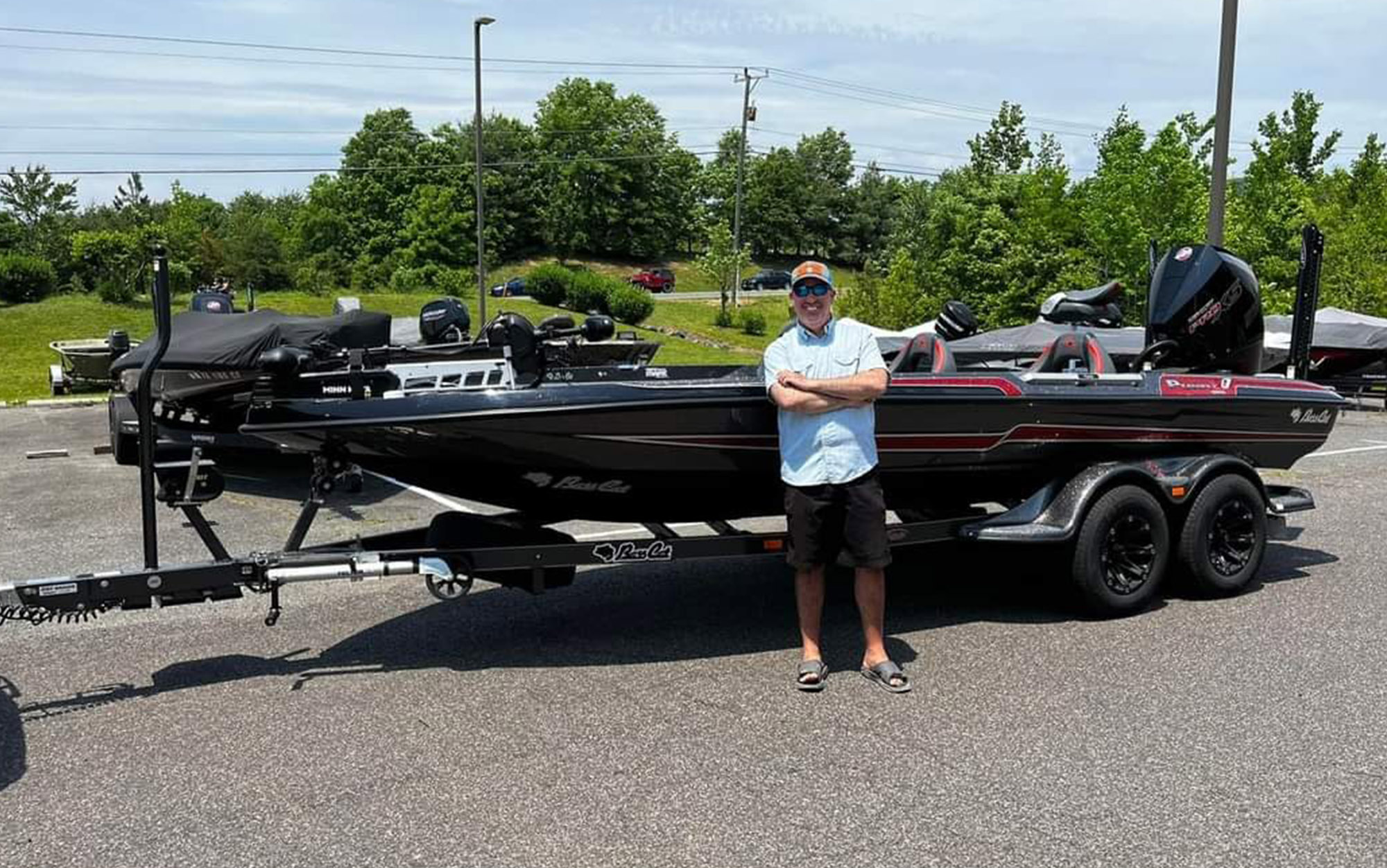
That’s why I settled on one bow screen and one for the console. When I want to fish offshore, I rely exclusively on one screen, broken down into multiple views. The ECHOMAP Ultra 126sv isn’t a typical 12-inch screen though. It seems larger than the 12-inch view I had on my last boat, and the fact that it’s a touchscreen makes it easy to customize my view on the fly.
Whenever possible, I try to get the same graphs on the console and bow, so if one of them dies or malfunctions during a day of fishing, I can simply swap them out. That’s not necessarily easy in this case because the console graph is flush mounted, but at least it meant that I didn’t need to learn two different technologies. I know that some anglers like different brands for different purposes, but I’ve always preferred to be uniform on any given boat. It simplifies the process.
READ NEXT: The Best Fish Finders
ECHOMAP Ultra 126sv Useability
The menus on the Garmin are intuitive, and you can back out if you start down the wrong path. Even without reading the manual—yes, I’m that guy—I quickly set up presets to take me almost immediately to my most-used vantage points. Once you turn the unit on, it quickly loads and leads you through several quick steps to calibrate the compass and build in your preferences. I experimented with various palettes and levels of sensitivity until I found the one that worked for me. On different waters with varying turbidity levels and cover or structure, I’ve found that I make slight adjustments to maximize the units’ benefits.
Learning LiveScope
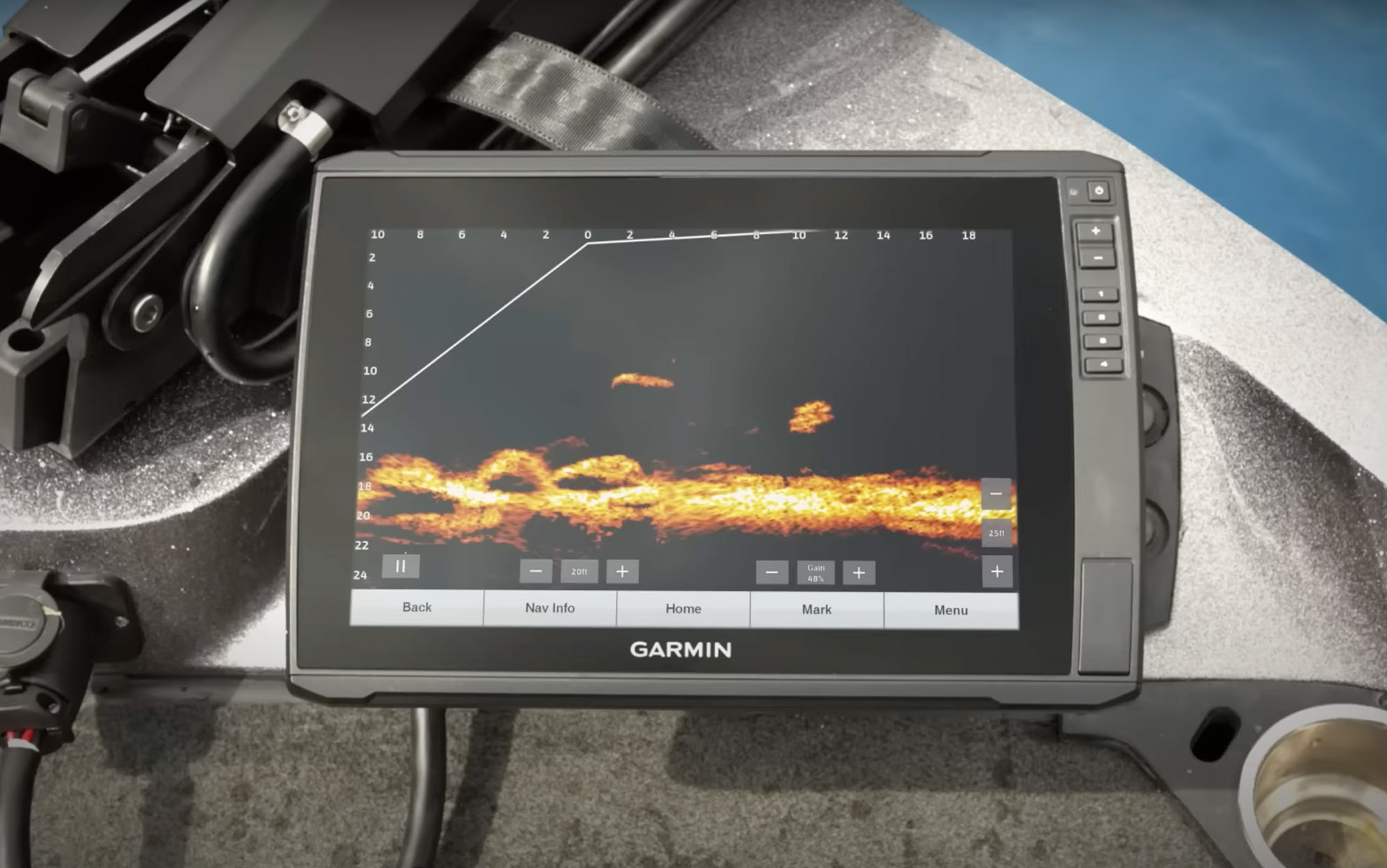
Several Bassmaster Elite Series pros led me through the basics of LiveScope before I ever ordered the boat, so I thought using it on the trolling motor would be easy. I was wrong. They had simply made it look easy. Yes, I could turn it on and see in front of me, but when I hit a stump and the “puck” accidentally got knocked upward, suddenly it was looking behind the boat, and I couldn’t figure out why. I had to make a call to a friend. With his advice, I clicked the unit two notches, and suddenly all was right with the view. It also took some experimenting with settings, including the “gain” function, to see fish and baitfish in front of me.
Ultimately, I learned to use the forward facing sonar reasonably well by spending a lot of time working with it. I went to structures I knew, like bridge pilings, and aimed the transducer at them to figure out how to focus and stay focused. Even then, I’d find my foot drifting, and suddenly I’d lose what I’d been looking at. It takes time on the pedal to dial it in and make it more intuitive. However, when I saw a fish eat my crankbait on the screen for the first time, that “a-ha” moment made me realize that I’d unlocked a new tool.
What the Garmin ECHOMAP Ultra 126sv Does Best
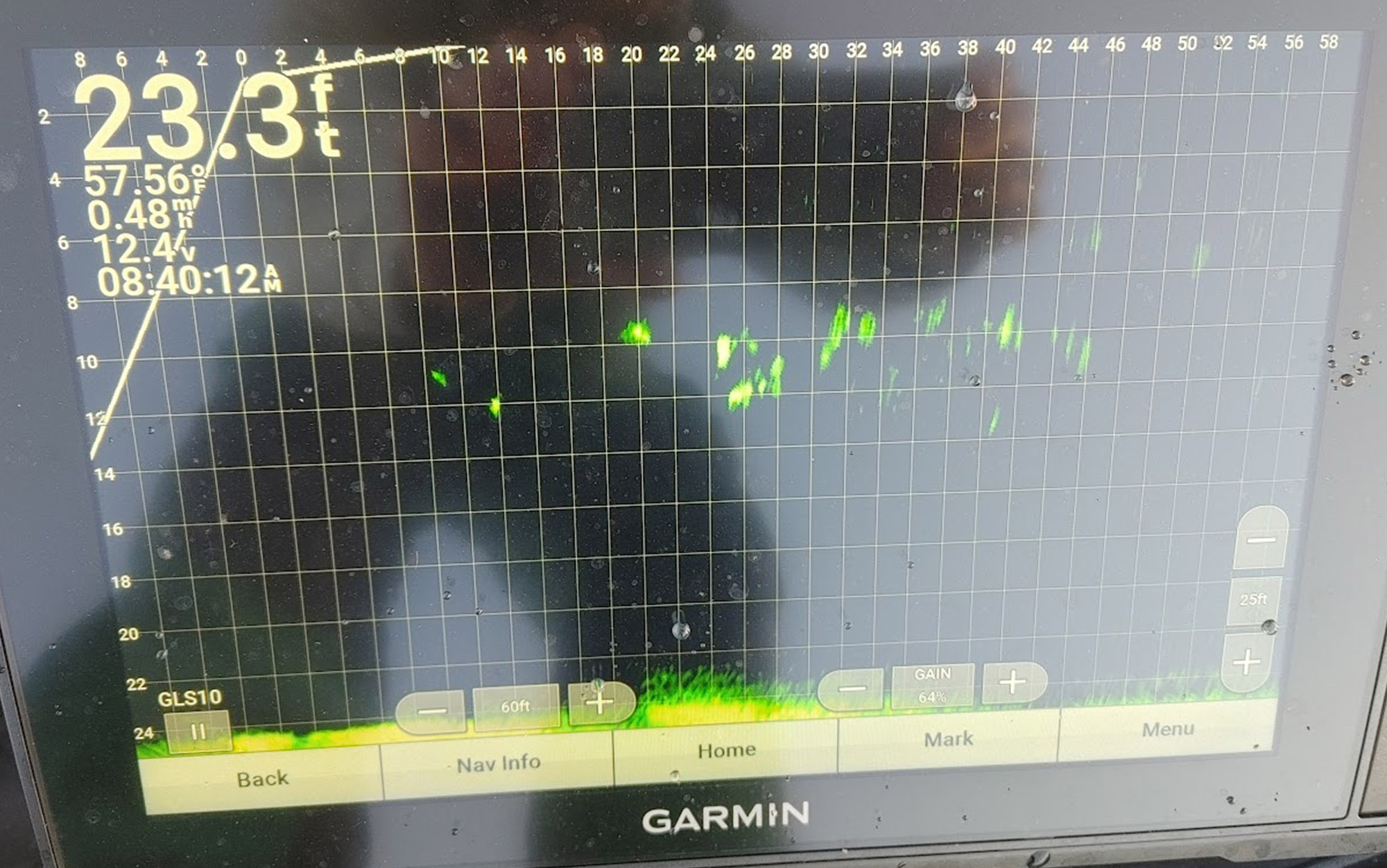
The LiveScope technology is a meaningful upgrade in sonar ability for the average angler. Several top pros have used it to win, including the 2023 Bassmaster Classic, and it’s even won on waters like Lake Okeechobee, where you might not expect it to be a major factor. It enables even the average weekend angler to see what’s in front of them and gauge fish behavior. By seeing how fish react, you’ll learn a lot about whether you’re using the right lure and cadence.
That’s great, but believe it or not, there are better things about this unit. What I really like is the clarity of the picture, the ease of use, and the fact that even after I’ve beaten it up a bit, it hasn’t gone downhill at all. I’ve heard anecdotal stories about “ghost trees” and other phantom images, but I haven’t experienced that.
I also like that my single graphs don’t need special mounts to secure them in rough water. The console-mounted model is firm, and the bow version locks into the provided gimbal and stays rock solid. The units may not be inexpensive, but there are no “hidden fees.”
I also unexpectedly found out that Garmin’s customer service is superlative. I saw lines on one side of the screen while side-imaging and thought it might be a faulty transducer. The customer service agent walked me through the testing process, sent a possible replacement part, and followed up multiple times to ensure everything was fine. It turned out not to be a factory or mechanical defect but rather a slight installation error. So not Garmin’s fault at all, and yet they still went out of their way to make things right.
Where Garmin ECHOMAP Ultra 126sv Can Improve
Look, if you’re exceptionally budget-conscious, these hefty and powerful units might not be the right call. Most anglers can get away with fewer features or a smaller screen size without losing fishing effectiveness. The price of the Garmin ECHOMAP Ultra 126sv is comparable with graphs from the other major companies. So they’re not over priced by any means. It’s just a mater of figuring out what you need and what price burden you can bear.
Also, if you pair it with a Garmin trolling motor, it might provide some additional efficiencies. But if you don’t go with a Force trolling motor you can still get a lot of utility. I chose one of the other best trolling motors on the market, and I’m still getting a lot of value out of my graph.
The one thing that I didn’t like about these graphs is the complexity of putting in the wires (on the console mount), especially in the dark. At nearly $3,000 per graph, I won’t leave it plugged in for a long ride down a bouncy highway or at a sketchy gas station. Granted, each additional feature requires some sort of connection, but Garmin could and should find a way to plug everything in easily, in one fell swoop. Eventually, I solved this by buying graph locks that will protect me against thieves, although maybe not a determined one with a Sawzall, but at least against casual miscreants.
Final Thoughts
Garmin made a push into the marine industry about a decade ago, and then seemed to back off a bit before reentering with gusto. I was dubious of their commitment and of their technology, and I wasn’t going to buy until I was sure that they were substantially better than the competition. Once that was clear, I knew I had to have them. I’ve drenched these units in the rain, pounded them through big waves, and knocked the transducer into stumps and dock pilings. Yet every time I turn them on, they fire right up and show me what I need. It was the right choice for my budget and for my fishing style.
Using LiveScope is a learning process, and I wish Garmin would devise a way to hold the beam in place, particularly on windy days when I fight the trolling motor to stay in position, but even for a 50-something technophobe, this technology helps me be more effective. I’ve gotten bites that I otherwise would not have triggered, and that makes it worth every penny.
